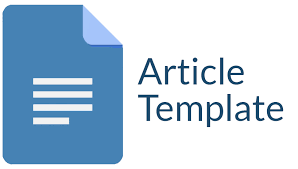INOVASI PELAYANAN AKTA KEMATIAN DAN AKTA KELAHIRAN MELALUI APLIKASI NATA ANGGOTA KELUARGA UNTUK LAPORAN AKTA (NAKULA) DI DINAS KEPENDUDUKAN DAN PENCATATAN SIPIL KOTA SURABAYA
DOI:
https://doi.org/10.26740/publika.v12n1.p13-22Keywords:
Pelayanan Publik, Inovasi Pelayanan, Aplikasi NakulaAbstract
Pelayanan publik menjadi tanggung jawab pemerintah, salah satunya Dispendukcapil Kota Surabaya. Banyak inovasi yang telah diluncurkan oleh Dispendukcapil Kota Surabaya, Salah satunya Nata Anggota Keluarga Untuk Laporan Akta (Nakula) aplikasi tersebut digunakan untuk mengurus Akta Kelahiran dan Akta Kematian, Diharapkan Nakula memudahkan dalam mengurus akta kematian dan akta kelahiran. Peneliti mengambil judul inovasi pembuatan akta kematian dan akta kelahiran melalui aplikasi Nakula di Dispendukcapil kota Surabaya. Dalam jurnal menggunakan jenis penelitian kualitatif serta dijelaskan secara analisis deskriptif. Dalam menganalisis Inovasi aplikasi Nakula peneliti menggunakan teori Taehyon Choi dan Susan Meyers Chandler (2019) yaitu : latar belakang terjadinya e-government, pendahuluan inovasi e- government yang meliputi struktur pendahuluan dan perilaku pendahuluan dan faktor implementasi e- government. Latar belakang terjadinya inovasi aplikasi Nakula yaitu perkembangan teknologi dan antrian pelayanan, pelayanan berbelit-belit, adanya calo, Sehingga Dispendukcapil Kota Surabaya meunculkan aplikasi Nakula. Struktur pendahuluan merupakan inovasi aplikasi Nakula yang memudahkan masyarakat dalam pengurusan akta kematian dan akta kelahiran. Perilaku pendahuluan merupakan tindakan dilakukan untuk keberhasilan inovasi dari pihak sumber daya manusia, dalam inovasi aplikasi Nakula diberikan sebuah sosialisasi. Faktor implementasi dari aplikasi Nakula yaitu pelayan akta kematian dan akta kelahiran proses yang terlalu lama serta pelayanan yang tidak efektif di Dispendukcapil Kota Surabaya.
Kata Kunci: Pelayanan Publik, Inovasi Pelayanan, Aplikasi Nakula
Public services are the responsibility of the government, one of which is the Surabaya City Population and Civil Registry Office. Many innovations have been launched by the Surabaya City Dispendukcapil, one of which is Nata Family Members for Deed Reports (Nakula). This application is used to administer birth certificates and death certificates. The researcher took the title innovation of making death certificates and birth certificates through the Nakula application at the Civil Service Office of Surabaya. The journal uses a type of qualitative research and is explained by descriptive analysis. In analyzing the Nakula application innovation, researchers use the theory of Taehyon Choi and Susan Meyers Chandler (2019), namely: the background of the occurrence of e-government, introduction to e-government innovation which includes preliminary structure and preliminary behavior and e-government implementation factors. The background to the innovation of the Nakula application is technological developments and service queues, convoluted services, the presence of middlemen, so that the Surabaya City Population and Civil Registry Office launched the Nakula application. The preliminary structure is an innovation in the Nakula application that makes it easier for the public to arrange death certificates and birth certificates. Preliminary behavior is an action taken for the success of innovation on the part of human resources, in the application innovation Nakula is given a socialization. The implementation factors of the Nakula application are the service for death certificates and birth certificates, the process is too long and the service is ineffective at the Dispendukcapil in the City of Surabaya.
Keywords: Public Service, Service Innovation, Application NAKULA
Downloads
 Abstract views: 351
,
Abstract views: 351
, PDF Downloads: 277
PDF Downloads: 277





